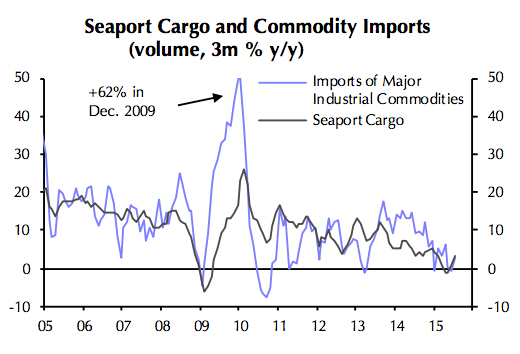Has the steelmaking raw material become a leading indicator?
The price of iron ore was trading sideways on Wednesday with the market for the steelmaking raw material appearing to be relatively insulated from the rout in metals.
The benchmark 62% Fe import price including freight and insurance at the Chinese port of Tianjin lost $0.20 or 0.4% at $53.10 a tonne, according to data provided by The SteelIndex.
That’s up 20.4% from record lows hit July 8 and therefore technically still a bull market defined as a one-fifth rise from a low.
The iron ore price has held above the psychologically important $50-level for six weeks while over that same period most base metals have endured double digit declines (copper fell to a fresh 6-year low on Wednesday while the decline in nickel year to date is now 30%).
The decline in base metals is for much the same reasons as iron ore: fears of a hard landing in China, new supply hitting the market and elevated stock levels.
No commodity is more sensitive to developments in China than iron ore. More than three-quarters of seaborne ore is sucked up by China. The same figure for base metals is between 40% and 50%.
It is therefore no surprise that iron ore would suffer the blows from China first.
And despite the fears now gripping commodity markets about slowing growth, given the Chinese economy’s size today 3% growth (less than half the official prediction) is much the same as 10% growth a decade ago.
The country’s imports bear this out: July iron ore imports by China climbed to the highest level this year with inbound cargoes reaching 86.1 million tonnes up 15% from the June total and compared to 82.5 million tonnes a year ago.
Imports year to date now total 539 million tonnes, little changed from the first seven months of 2014.
Indeed, viewed more broadly growth in Chinese sea cargoes and commodity imports are sitting at a seventh month highs:

Source: Capital Economics
Even if the doom-mongers are correct and China is in much deeper trouble than even today’s panic suggests Beijing still has a number of ways to stimulate the economy, especially the raw materials sector.
The $160 billion infrastructure bonds plan it launched earlier this month hardly gets a mention amid all the noise, but the first batch of $48 billion is expected to be released by the end of this month.
The bonds follow a $173 billion recapitalization of the country’s two largest development banks in two rounds in April and July as part of its grand “New Silk Road” initiative.
These funds represent only half the size of the stimulus measures following the global financial crisis when some $586 billion was pumped into the economy.
The dramatic effect of that program on commodity imports can be clearly seen on the graph.
Image of Dongtai Lu antique market figurines in Shanghai, 2007 by claudio zaccherini / Shutterstock.com